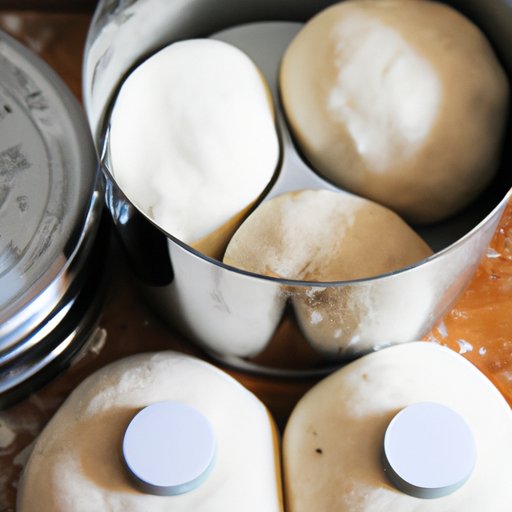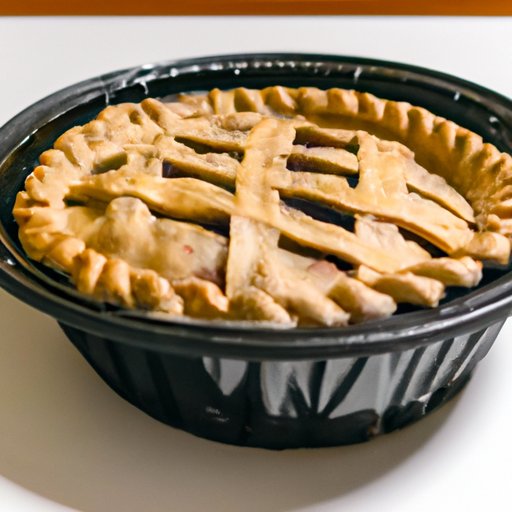
Introduction
Pie baking can be a rewarding and delicious experience, but it often comes with its own set of challenges. One of the most common problems faced by pie bakers is achieving a perfectly baked crust. Oftentimes, crusts can shrink, bubble or become soggy, leaving the final product less than desirable. This is where pie weights come in – they are a secret ingredient that can help achieve that perfect crust we all strive for.
This article will dive into the world of pie weights, exploring what they are, how they work, and their benefits. We’ll also provide some tips for using pie weights properly and choosing the right type for your specific needs.
The Secret Ingredient Every Pie Baker Needs: Understanding Pie Weights
Pie weights are small, heavy objects that are used to weigh down pie crust during the baking process. Their primary function is to prevent the crust from shrinking or bubbling up while it’s baking. This ensures a nice, even crust that will hold up well when the pie is sliced and served.
There are a variety of materials that can be used for pie weights, including ceramic, metal, glass, and even rice or dried beans. Each material offers its own benefits and disadvantages, which we’ll explore in more detail in the next section of this article.
When it comes to how pie weights work, the idea is fairly simple. By adding weight to the crust, they help keep it in place and prevent it from puffing up. This weight also helps ensure even baking, which is essential for a well-baked crust.

Baking Perfect Pies: How Pie Weights Can Help Achieve Perfection
One of the biggest benefits of using pie weights is that they help achieve even baking. This is especially important when it comes to making pies, as a perfectly baked crust can make or break the final product.
Pie weights also help prevent crust from shrinking or bubbling up while it’s baking. This can be a common problem, especially when it comes to blind baking – a baking technique where the crust is baked without any filling. In this case, pie weights are essential for ensuring that the crust maintains its shape and doesn’t pull away from the sides of the pan.
When using pie weights, it’s important to follow proper techniques to ensure the best results. For example, you’ll want to evenly distribute the weights throughout the crust and make sure they don’t move around while it’s baking.
Pie Weights 101: Everything You Need to Know to Bake the Perfect Pie
When it comes to using pie weights, there are a few things you need to know to ensure success. One of the most important factors is understanding the difference between blind baking and regular baking.
Blind baking is when the crust is baked without any filling, and is often used for pies with liquid fillings like custard or pudding. Pie weights are essential for blind baking, as they help prevent the crust from puffing up or shrinking while it’s baking.
Regular baking is when the crust is baked with the filling, and pie weights are not usually necessary. However, some bakers still prefer to use them to ensure even baking and a well-formed crust.
When using pie weights, it’s important to evenly distribute them throughout the crust. You’ll also want to make sure they don’t move around while it’s baking, as this can lead to uneven baking and a less than desirable final product.
Why Pie Weights Are Essential for Blind Baking
Blind baking can be a particularly challenging aspect of pie baking, and pie weights are essential for ensuring success. Without them, the crust is likely to shrink, puff up, or become misshapen during the baking process.
When using pie weights for blind baking, it’s important to follow proper techniques to ensure even baking and a well-formed crust. This includes preheating the oven, evenly distributing the weights throughout the crust, and allowing the crust to cool before removing the weights and adding the filling.
Some bakers also like to “dock” the crust – poking small holes in it with a fork – before adding the weights. This can help prevent air pockets from forming and ensure even baking.
Pie Baking Hacks: How Pie Weights Can Save You Time and Effort
Pie weights not only help ensure a well-baked crust, but they can also save you time and effort in the baking process. By using them, you won’t have to worry about constantly checking on your crust to make sure it’s baking evenly, which can be a time-consuming and potentially frustrating task.
Pie weights can also help speed up the baking process, as they help ensure even baking and prevent the need for additional baking time. This can be particularly useful if you’re short on time or have other baking projects to work on.
Other benefits of using pie weights include saving on ingredients – you won’t have to worry about filling your crust with beans or rice that will ultimately go to waste – and reducing the risk of burning yourself while working with hot pie dishes.
The Benefits of Using Pie Weights for a Crispy, Flaky Crust
One of the biggest benefits of using pie weights is achieving a crispy, flaky crust. This is especially important when it comes to certain types of pies, such as fruit pies, where a crispy crust can really make a difference in the overall flavor and texture of the final product.
By using pie weights, you ensure that the crust stays in place while it’s baking, preventing it from becoming soggy or under-cooked. This can result in a better texture and flavor overall, making your pies stand out from the rest.
To achieve a crispy, flaky crust with pie weights, it’s important to follow proper techniques and choose the right type of pie weight for your specific needs. We’ll explore this in more detail in the next section of this article.
From Ceramic to Steel: Choosing the Right Pie Weight for Your Baking Needs
When it comes to choosing the right type of pie weight, there are a few things to consider. First, think about the type of pies you’ll be baking and what materials will work best for your needs.
Ceramic pie weights are a popular choice, as they are easy to use and distribute evenly throughout the crust. They also hold heat well, which can help achieve an evenly baked crust.
Metal pie weights are another option, and they can be made from a variety of materials like steel and aluminum. They are often less expensive than ceramic weights, but they may not distribute heat as evenly.
Other options include glass or rice and dried beans. Glass weights can be heavy and durable, but they may not work as well for certain types of crusts. Rice and dried beans are an inexpensive option, but they can be difficult to distribute evenly and may stick to the crust during baking.
When choosing a pie weight, consider the needs of your specific baking project and the pros and cons of each type. You’ll also want to make sure that the pie weight you choose is oven-safe and easy to use.
Conclusion
Pie weights are a secret ingredient that every pie baker needs in their arsenal. They help achieve even baking, prevent crust from shrinking or bubbling up, and can even save you time and effort in the baking process.
By following proper techniques and choosing the right type of pie weight for your specific needs, you’ll be well on your way to baking perfect pies with a crispy, flaky crust.
Remember to evenly distribute the weights throughout the crust, follow the proper techniques for blind baking, and explore the different materials available for pie weights.
With a little practice and know-how, you’ll be baking perfect pies that will impress even the toughest of critics.





